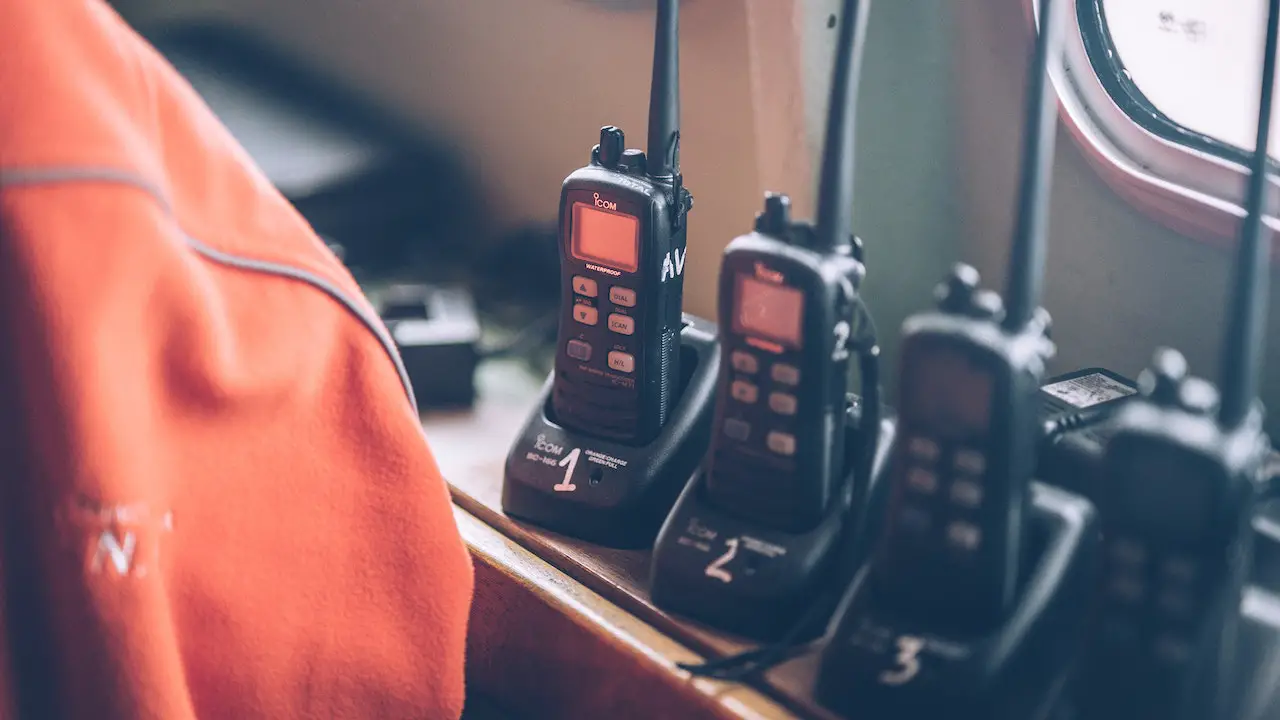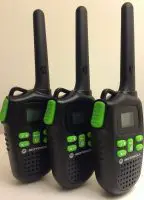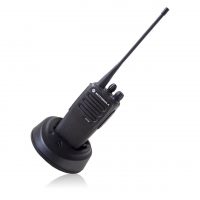Walkie talkies have been around for almost a century, but they became significantly more popular for recreational use in the 1970s and 1980s. This era also witnessed an explosion in the number of walkie talkie manufacturers globally. Today, the average walkie talkie enthusiast can choose devices from a number of big-name brands such as Motorola, Pxton, Cobra, Retevis, Kenwood, and Uniden.
Most of these brands sell walkie talkies in pairs or larger sets, and this may give you the impression that these devices are designed to work only with other devices of the same brand and model. However, this is untrue.
In this guide, we will discuss whether you can use walkie talkies from different brands as well as how to communicate using walkie talkies of different brands.
Table of Contents
How Do Walkie Talkies Communicate With Each Other?
Before discussing whether walkie talkies from different brands will work with each other, it is worth examining how exactly walkie talkies communicate. These devices first pick up audio from users using a microphone.
They then encode this audio onto a specific radio frequency, and then transmit it via their antenna. Other walkie talkies tuned to the same frequency can then receive the encoded signal and convert it back into audio, which is then played back on their device’s loudspeaker.
This means radio frequencies are the key to how walkie talkies communicate. This is important to note as it will play a vital role in determining whether walkie talkies from two different brands can work with each other.
Will Walkie Talkies From Different Brands Work With Each Other?
So will walkie talkies from different brands work with each other? The answer is a conditional “yes”. You can certainly use a Retevis walkie to communicate with someone that is using a Pxton walkie talkie. However, the key to connect these devices together is frequency.
If both these devices are capable of tuning to the same frequency, they should be able to communicate with one another. It is worth noting that there are many types of walkie talkies out there that certain kinds are limited to specific frequency ranges that others cannot reach.
For example, a quick look at the walkie talkies frequency list reveals that FRS walkie talkies operate on frequencies 462.5625 to 467.7125. This means FRS Pxton walkie talkie frequencies within this range will work with FRS Retevis H777 frequencies within the same range.
By contrast, the Retevis H777 won’t be able to communicate with a MURS walkie talkie such as the Motorola RMM2050 because the latter device operates at frequencies between 151.940 and 154.570.
Will Walkie Talkies With Different Power Levels Work With One Another?
Walkie talkies models from different brands or even the same brand often differ in terms of power level. This refers to the amount of power their antennas use to transmit signals over long distances. Walkie talkies with high power levels are generally capable of transmitting signals over longer distances than those with lower power levels.
Most walkies have power levels ranging from 0.5W to 5W. Some models also have dedicated buttons that allow users to switch from low power to high power mode depending on their intended range and whether they wish to preserve their device’s battery life.

You might be wondering if walkie talkies from different brands and different power levels can communicate with each other. The answer is yes. The walkie talkies should be able to communicate with each other within a specific distance as long as they are set to the same frequency.
The communication range will depend on the device with the lower power output. So if a Pxton walkie talkie with a 0.5W power level is attempting to communicate with a Retevis talkie walkie with a 2W power level, the communication range will be limited to the Pxton device’s range.
How to Connect Walkie Talkies from Different Brands
Connecting walkie talkies from different brands takes a bit more effort to do than connecting walkie talkies of the model and from the same brand. However, it is worth learning how to do this if you ever need to use walkie talkies from different brands in an emergency situation. The steps to do this are summarized below.
Step 1: Turn On Each Walkie Talkie
The first step is to turn on each walkie talkie and check which channel each device is set to. Most modern walkie talkies have screens that display the channel number and frequency, so this is easy to check.
Step 2: Get to the Same Frequency
If you were using walkie talkies of the same brand, you could switch both to the same channel and end up at the same communication frequency. However, different brands have different frequencies associated with each channel. This means Channel 1 on a particular device could be equivalent to Channel 6 on another device.
For this reason, you might need to check each walkie talkie’s manual to learn which frequency each channel is on. Once you match up the frequencies, you should be able to switch to the appropriate channel on each device and communicate between them.
Step 3: Deactivate CTCSS or DCS
Some walkie talkies have special built-in features designed to prevent unauthorized users on the same frequency from eavesdropping on communications. These are known as Continuous Tone-Coded Squelch System (CTCSS) and Digitally Coded Squelch (DCS).
If your walkie talkies can’t communicate despite being set to the same frequency, there’s a good chance that one or more of them have CTCSS or DCS activated. Therefore, you will need to deactivate these features to allow your devices to communicate.
Learning More About Walkie Talkies
As you can see, it is certainly possible for walkie talkies from different brands to communicate with each other. However, it is important to understand the frequencies that each model is capable of working on. This information could be incredibly useful in an emergency, so it is important to understand your walkie talkie’s capabilities before taking it on outings. You can learn more about choosing walkie talkies and operating them effectively in different situations by reading our other guides.





